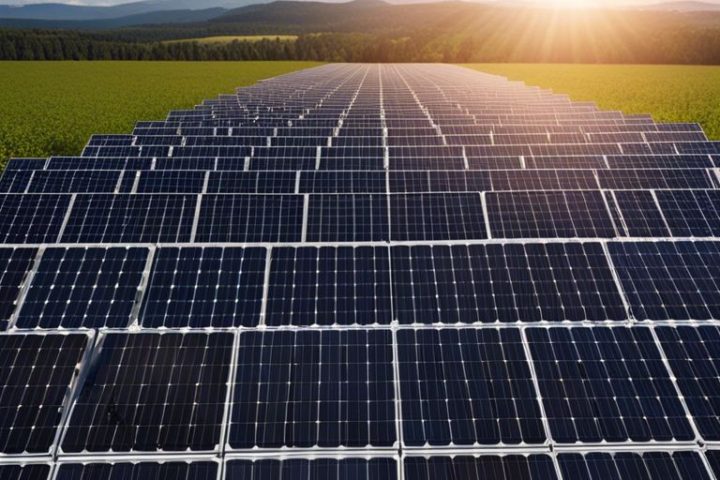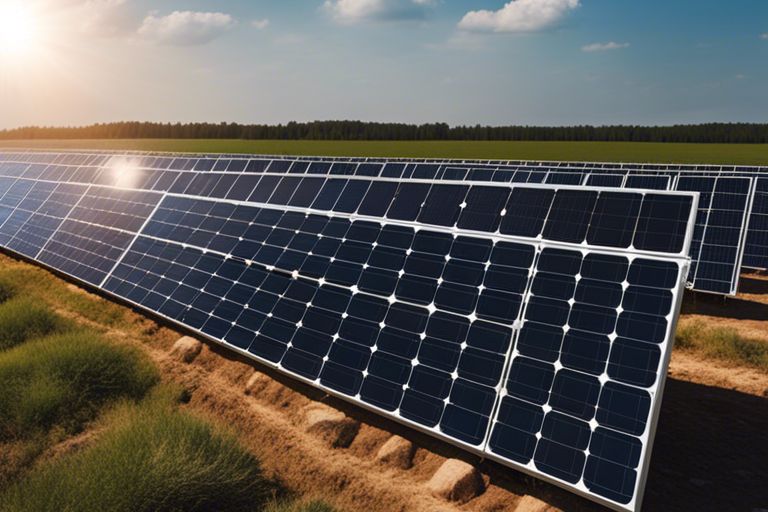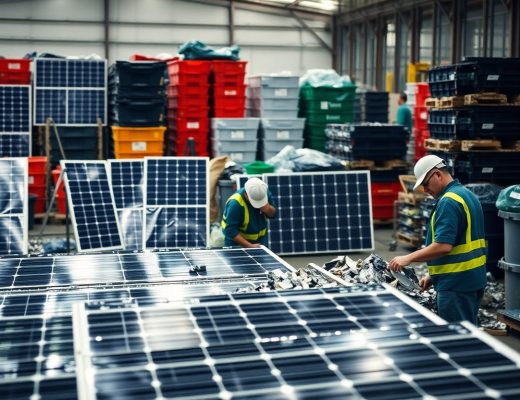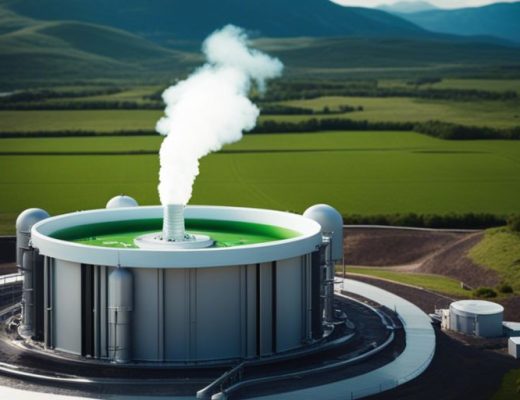This comprehensive guide will help you understand the ins and outs of solar power generation. Whether you’re looking to reduce your carbon footprint, save on energy bills, or become more self-sufficient, solar power can be a fantastic investment. From understanding how solar panels work to choosing the right system for your needs, this guide will empower you to harness the power of the sun for your own benefit.
Understanding Solar Power Generation
Definition and Principles
The use of solar energy to generate electricity is known as solar power generation. This process involves the conversion of sunlight into electricity using photovoltaic (PV) cells. These cells are made up of semiconductors typically composed of silicon, which produce an electric current when exposed to sunlight.
History of Solar Power Generation
Little did you know, the history of solar power generation dates back to the 19th century when the photovoltaic effect was first discovered by French physicist Alexandre-Edmond Becquerel in 1839. However, it wasn’t until the 1950s that modern solar cells were developed, eventually leading to the commercialization of solar technology.
Plus, solar power generation offers a sustainable and renewable source of energy that can reduce your carbon footprint and reliance on fossil fuels. By harnessing the power of the sun, you can generate clean electricity for your home or business, contributing to a greener and more sustainable future.
Types of Solar Power Generation
Clearly, there are several types of solar power generation technologies that harness the sun’s energy to produce electricity or heat. Understanding the different methods of solar power generation can help you choose the most suitable option for your needs. Here is a breakdown of the various solar power generation technologies:
| Photovoltaic (PV) Systems | Concentrated Solar Power (CSP) Systems |
| Solar Water Heaters | Solar Space Heating and Cooling |
Photovoltaic (PV) Systems
You can generate electricity using Photovoltaic (PV) systems, which convert sunlight directly into electricity through the use of solar cells. These systems are commonly used in residential, commercial, and utility-scale applications. Photovoltaic systems require sunlight to produce electricity, so they are most effective in sunny regions. Assume that you are keen on generating your electricity and reducing your dependence on the grid, a PV system could be the right choice for you.
Concentrated Solar Power (CSP) Systems
One of the most efficient ways to generate electricity on a large scale is through Concentrated Solar Power (CSP) systems. These systems concentrate sunlight using mirrors or lenses to create intense heat, which is then used to generate electricity through steam turbines. CSP systems are typically used in large power plants and can provide a reliable source of electricity. If you are looking for a technology that can generate electricity even when the sun is not shining, a CSP system could be a suitable option.
Solar Water Heaters
Water heating can be accomplished using solar water heaters, which utilize sunlight to heat water for residential or commercial use. Solar water heaters are cost-effective and environmentally friendly alternatives to traditional water heaters. For instance, if you want to reduce your energy bills and lower your carbon footprint, installing a solar water heater could be a wise choice.
Solar Space Heating and Cooling
Types of solar space heating and cooling systems can help you maintain a comfortable indoor temperature using solar energy. Solar space heating systems utilize sunlight to heat indoor spaces, while solar cooling systems use solar energy to cool buildings through absorption chillers or desiccant cooling. Solar space heating and cooling technologies can significantly reduce your energy costs and environmental impact.
Factors to Consider for Effective Solar Power Generation
Unlike traditional energy sources, solar power generation relies heavily on environmental factors for its efficiency. To ensure the effectiveness of your solar power system, there are several key factors you need to consider:
- On Location and Climate
- Design and System Size
- An Energy Efficiency and Storage
- Some Maintenance and Repair
Location and Climate
On location and climate, choosing the right spot for your solar panels is crucial. Ideally, you want to place your panels in an area that receives maximum sunlight throughout the day. Additionally, consider the climate of your region as it can impact the efficiency of your solar power system.
Perceiving the weather patterns and sunlight exposure of your location will help you determine the optimal positioning for your solar panels.
Design and System Size
Designing the right solar power system for your energy needs is imperative. The size of your system will depend on factors such as your electricity consumption and available space for solar panels. The design of your system should be tailored to maximize energy production and efficiency.
The efficiency of your solar power system will be greatly influenced by its design and size, so it’s important to get this aspect right from the beginning.
Energy Efficiency and Storage
An energy-efficient solar power system will not only generate more power but also help you save on energy costs. Integrating energy storage solutions such as batteries can enable you to store excess energy for use during low sunlight periods or at night.
With proper energy efficiency measures and storage solutions, you can ensure a consistent and reliable power supply from your solar panels.
Maintenance and Repair
Some regular maintenance and repair tasks are necessary to keep your solar power system running efficiently. This includes cleaning the panels, checking for any damages, and ensuring all components are functioning correctly. Regular maintenance will help prevent potential issues and prolong the lifespan of your system.
To ensure the longevity and optimal performance of your solar power system, it’s imperative to stay on top of maintenance and repair tasks.
Step-by-Step Guide to Installing Solar Power Generation Systems
To ensure a successful installation of a solar power generation system, it is important to follow a step-by-step approach. This guide will walk you through the process, from assessing your energy needs to testing and commissioning the system.
Assessing Your Energy Needs
| You | Information |
| Determine your daily energy consumption | This will help you estimate the size of the solar power system needed to meet your energy needs |
| Identify peak usage times | Understanding when you use the most energy can help in sizing the system and incorporating battery storage |
Choosing the Right System Components
| Systems | Information |
| Select solar panels, inverters, and batteries | Choose components based on your energy needs, roof space, and budget |
Power inverters are important components that convert the direct current (DC) produced by the solar panels into alternating current (AC) used in your home.
Installation and Setup
| Installation | Information |
| Mount solar panels on the roof | Ensure they are positioned for maximum sunlight exposure |
| Connect panels to the inverter | Follow manufacturer’s instructions for wiring and safety precautions |
Right placement and connection of components are crucial for optimal system performance and longevity.
Testing and Commissioning
| You | Information |
| Conduct performance tests | Ensure all components are working correctly and producing the expected power output |
For instance, you should check for any shading that may impact the efficiency of your system and make necessary adjustments for maximum solar power generation.
Tips for Maximizing Solar Power Generation Efficiency
After setting up your solar power generation system, there are several strategies you can employ to ensure you are getting the most out of it. Optimizing the efficiency of your system is crucial to maximizing the amount of electricity it produces. Here are some tips to help you do just that:
Optimal Panel Angle and Orientation
With solar panels, the angle at which they are tilted and the direction they face can significantly impact their performance. To maximize energy production, it is recommended to place your panels at an angle equal to your latitude. Additionally, panels should face south in the northern hemisphere and north in the southern hemisphere to capture the most sunlight throughout the day.
Cleaning and Maintenance Schedules
If you want to ensure your solar panels continue to operate at peak efficiency, regular cleaning and maintenance are important. Dust, dirt, bird droppings, and other debris can accumulate on the panels over time, blocking sunlight and reducing energy production. It is recommended to clean your panels every 6-12 months, depending on your location and the amount of dust and debris in the area. This will help maintain optimal energy output and extend the longevity of your system.
This regular maintenance not only ensures maximum energy production but also helps you identify any potential issues with your system early on, allowing you to address them before they become major problems.
Energy Monitoring and Tracking
You can further increase the efficiency of your solar power system by monitoring and tracking your energy production on a regular basis. There are various tools and software available that allow you to keep track of how much electricity your system is generating, how much you are consuming, and how much you are exporting back to the grid.
By monitoring your energy usage patterns, you can identify opportunities to increase energy efficiency in your home and make adjustments to optimize your system’s performance. Additionally, tracking your energy production can help you detect any issues with your system promptly.
Tips for subsection ‘Energy Storage and Backup Systems’
For optimal solar power generation, consider investing in energy storage and backup systems. This allows you to store excess energy generated during the day for use during the night or on cloudy days. Additionally, having a backup system in place ensures you have a continuous power supply in case of grid outages or emergencies.
Energy storage systems can help you achieve greater independence from the grid and maximize your energy self-consumption, ultimately leading to more significant savings on your electricity bills.
Energy storage and backup systems are important components of a comprehensive solar power generation setup, providing you with peace of mind and enhanced efficiency in harnessing solar energy.
Pros and Cons of Solar Power Generation
Many people considering solar power want to weigh the advantages and disadvantages. Here is a breakdown of the pros and cons of solar power generation:
| Pros | Cons |
| Clean, renewable energy source | Intermittent energy production |
| Reduces electricity bills | High initial cost |
| Low maintenance costs | Dependent on sunlight availability |
| Government incentives and rebates | Storage challenges for excess energy |
Environmental Benefits
One of the significant advantages of solar power is the positive impact it has on the environment. Solar energy is a clean, renewable source of power that produces no greenhouse gas emissions, helping to combat climate change and reduce your carbon footprint. Additionally, solar power helps conserve our valuable natural resources by reducing the dependence on non-renewable energy sources such as coal and natural gas.
Economic Advantages
For those considering solar power, there are several economic advantages to take into account. By installing solar panels, you can significantly reduce or even eliminate your electricity bills, providing long-term savings on your energy costs. Furthermore, many governments offer financial incentives, such as tax credits and rebates, to encourage the adoption of solar energy systems.
Solar power not only benefits the environment and your wallet but also has a range of technical limitations to consider, which may impact your decision to switch to solar energy.
Technical Limitations
If you live in an area with frequent cloud cover or limited sunlight exposure, solar panels may not be as efficient in generating electricity. Additionally, the upfront cost of installing solar panels can be high, making it a significant investment for some homeowners. It’s important to consider these technical limitations before deciding to go solar.
Technical factors can influence the effectiveness and efficiency of a solar power system. It is crucial to assess your location’s sun exposure, shading issues, and the available space for solar panel installation to maximize the benefits of solar energy.
Financial and Policy Incentives
With the increasing focus on renewable energy, many governments and organizations offer financial incentives and policy support for solar power generation. These incentives can include tax credits, rebates, and net metering programs that allow you to sell excess energy back to the grid. By taking advantage of these incentives, you can make solar power more affordable and attractive for your home or business.
Pros: Solar power offers a clean, renewable energy source that can reduce your carbon footprint and electricity bills. Additionally, government incentives and rebates make solar power more accessible and cost-effective for consumers.
Conclusion
So, now you have a comprehensive guide to solar power generation at your disposal. By understanding the benefits, types of solar panels, installation process, and maintenance tips, you are well-equipped to make informed decisions about incorporating solar energy into your life. Whether you are considering residential solar panels or looking to harness solar power for your business, this guide has provided you with the vital information needed to get started on your journey towards sustainable energy.
Note, solar power generation offers a renewable and efficient way to reduce your carbon footprint and save on energy costs. Embracing solar energy not only benefits the environment but also contributes to your financial savings in the long run. So, take the next step and explore the possibilities of solar power generation for a brighter and more sustainable future for you and generations to come.





